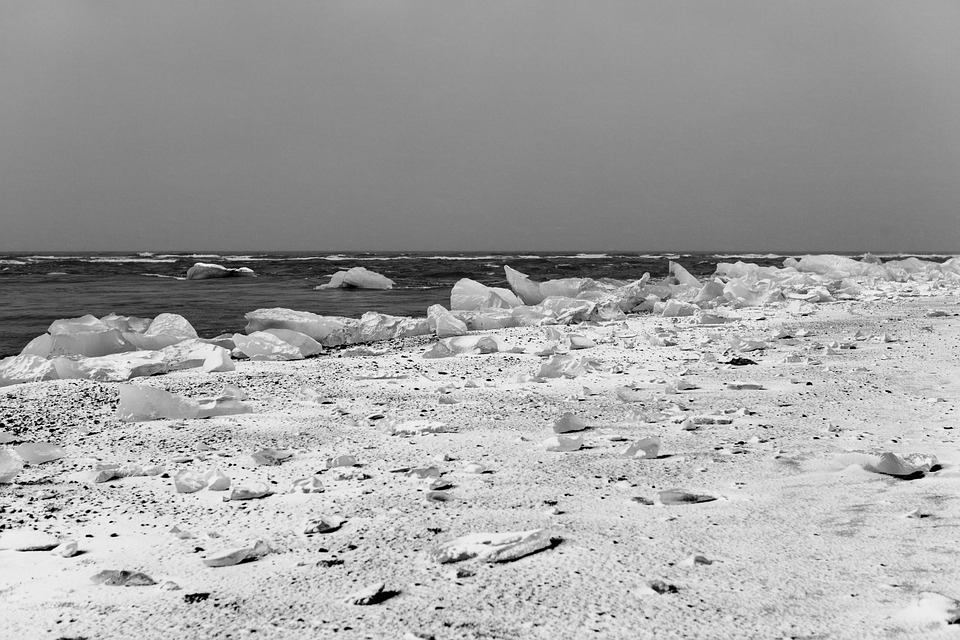As the world battles with the pandemic that is COVID-19, there is also the existing problem of climate change, as temperatures are rising and causing the frozen polar regions to start melting at a shocking pace. The situation looks even grimmer as NASA satellite images reveal that two polar ice caps have completely melted in a span of three years.
Express reports that the ice caps that melted were the St. Patrick Bay ice caps in the Hazen Plateau, in the northeastern Ellesmere Island in Nunavut, Canada. Scientists previously already predicted back in 2017 that the ice caps would melt unless something could be done to fight climate change. However, it appears that not much has been done, based on the recent satellite images taken by NASA’s Advanced Spaceborne Thermal Mission and Reflection Radiometer.
On a global scale, sea levels have been rising as high as eight millimeters a year because of climate change that results in melting ice in the polar regions. Between 1993 and 2014 alone, sea levels were already up by 2.3 inches, which may not seem like a lot, but it still stands to have dangerous consequences in the future. Should nothing be done, then coastal cities such as New York could potentially be submerged by the end of the century.
Other climate models have revealed that a rise in sea levels of over two meters could result in the submerging of large parts of Great Britain’s coastline - Hull, Peterborough, Portsmouth, as well as parts of East London and the Thames Estuary, would be at risk.
Another effect of climate change is that animals who are native to frozen or polar regions, such as polar bears, would soon find themselves losing their natural habitats and thus would be at risk of becoming extinct. As the temperatures rise, certain wildlife such as seals, who are prey to polar bears, would be able to swim much faster, meaning these polar bears would die of starvation.
According to a study made by Polar Bears International, where they analyzed 13 subpopulations of these polar bears, 12 of these subpopulations were revealed to be declining in numbers due to the gradual loss of their habitat.



 How is Antarctica melting, exactly? Crucial details are beginning to come into focus
How is Antarctica melting, exactly? Crucial details are beginning to come into focus  Philippines' 'Missile Acquisition' Plan Provokes China's 'Arms Race' Warning
Philippines' 'Missile Acquisition' Plan Provokes China's 'Arms Race' Warning  Most of us trust scientists, shows a survey of nearly 72,000 people worldwide
Most of us trust scientists, shows a survey of nearly 72,000 people worldwide  Extreme heat, flooding, wildfires – Colorado’s formerly incarcerated people on the hazards they faced behind bars
Extreme heat, flooding, wildfires – Colorado’s formerly incarcerated people on the hazards they faced behind bars  What’s so special about Ukraine’s minerals? A geologist explains
What’s so special about Ukraine’s minerals? A geologist explains  It’s science, not fiction: high-tech drones may soon be fighting bushfires in Australia
It’s science, not fiction: high-tech drones may soon be fighting bushfires in Australia  The secret world of plants living in our limestone pavements
The secret world of plants living in our limestone pavements  As the Black Summer megafires neared, people rallied to save wildlife and domestic animals. But it came at a real cost
As the Black Summer megafires neared, people rallied to save wildlife and domestic animals. But it came at a real cost  FDA Approval of Opdivo Injection Sparks Hope for Cancer Patients with Revolutionary Treatment Update
FDA Approval of Opdivo Injection Sparks Hope for Cancer Patients with Revolutionary Treatment Update  ‘Unseen world’: researchers capture fascinating footage of the world’s smallest penguins in a bid to save them
‘Unseen world’: researchers capture fascinating footage of the world’s smallest penguins in a bid to save them  One of the largest searches for alien life started 30 years ago. Its legacy lives on today
One of the largest searches for alien life started 30 years ago. Its legacy lives on today  LA fires: Fast wildfires are more destructive and harder to contain
LA fires: Fast wildfires are more destructive and harder to contain  Some black holes at the centers of galaxies have a buddy − but detecting these binary pairs isn’t easy
Some black holes at the centers of galaxies have a buddy − but detecting these binary pairs isn’t easy  From dead galaxies to mysterious red dots, here’s what the James Webb telescope has found in just 3 years
From dead galaxies to mysterious red dots, here’s what the James Webb telescope has found in just 3 years  Human settlement of Mars isn’t as far off as you might think
Human settlement of Mars isn’t as far off as you might think 






























